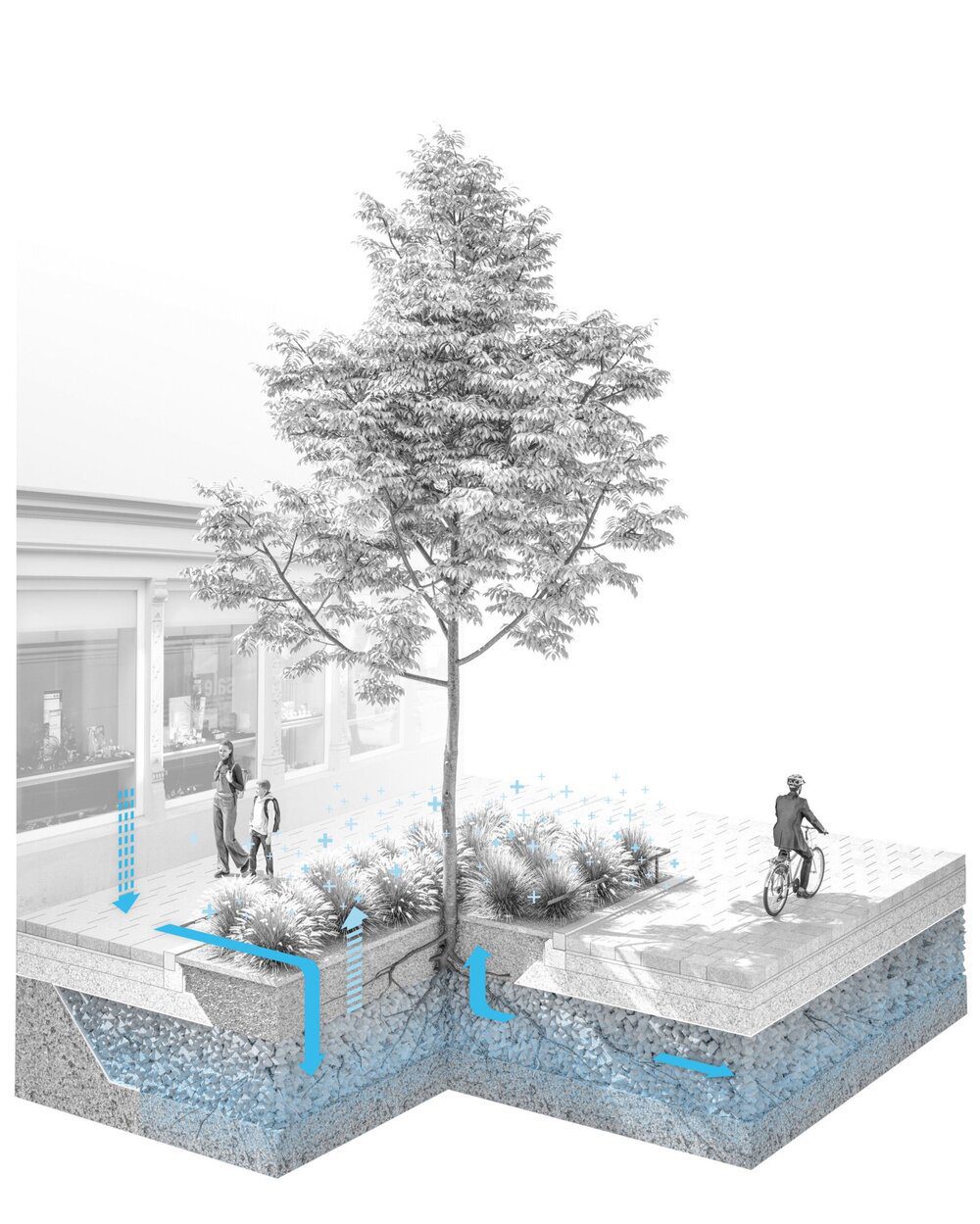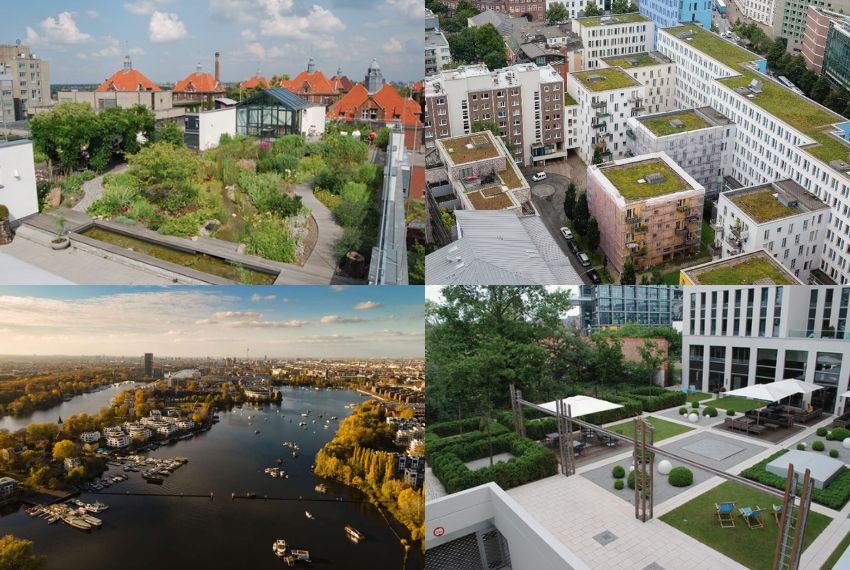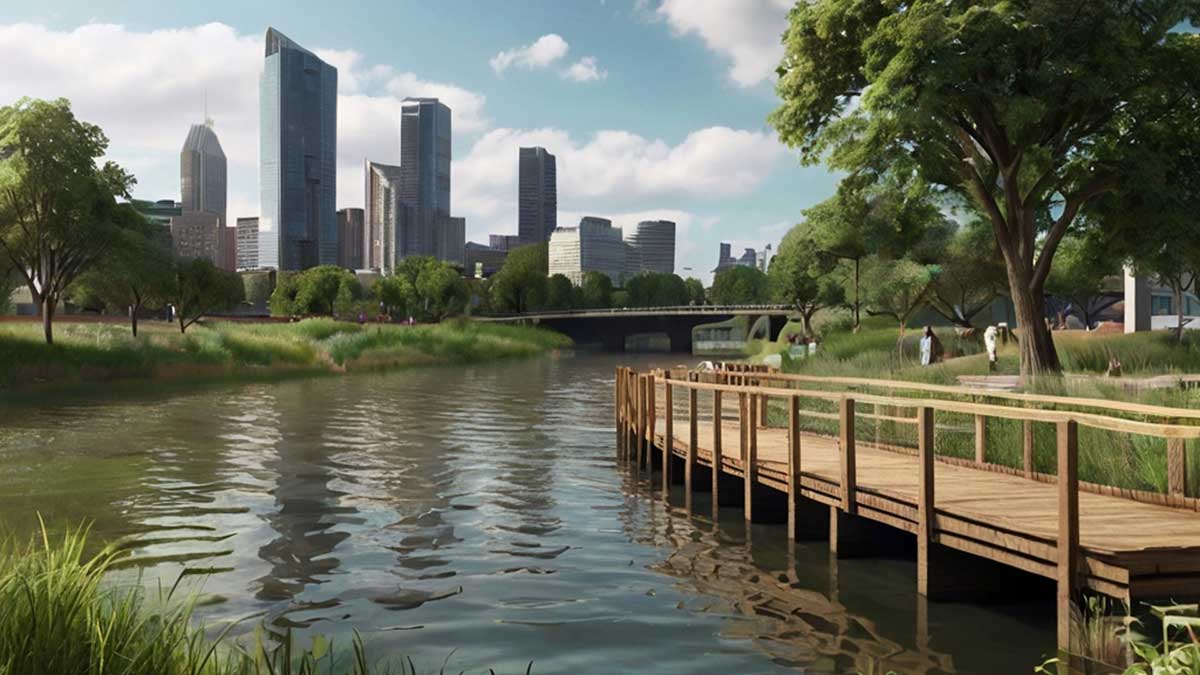Breathing Cities: How Sponge City Design is Making Cities Stronger for the Future
Our cities have become hard, unbreakable shells as a never-ending flow of concrete and asphalt spreads over the earth. This has changed a natural activity, like rain, into a destructive force that causes terrible floods in cities, sewer systems that can’t handle the flow, and dirty waterways. We have basically created a crisis.
But what if our towns might learn to breathe again? What if they could take in, purify, and store water like a natural landscape? The “Sponge City” movement is based on this strong and hopeful vision. It is a big change in the way cities are designed, going from the old “drain-and-dispose” model to one that copies nature’s own creativity. A sponge city is an urban ecosystem that has a lot of green and blue infrastructure that works with the environment to make the future better for everyone.
The Issue with the “Drain-and-Dispose” Model
For more than a hundred years, city planners have used a “grey infrastructure” method to control water. This system is made up of a lot of pipelines, drains, and culverts that work together to quickly move stormwater away from cities. This method worked well in the past, but it has become a hazardous weakness in today’s world.
These old systems are easily overrun as climate change around the world causes heavier rain to fall more often and harder. The upshot is not just floods in cities, but also a lot of other problems: dirty runoff that brings oil, chemicals, and trash into our rivers and oceans; less groundwater recharge; and a stronger urban heat island effect, where hard, dark surfaces absorb and radiate heat. Our cities are so full with concrete that they can’t control their own temperature or water cycle.

Design of an urban space intended for the retention of rainwater
Urban Permeability: The Secret to a Thriving City
The main idea behind a sponge city is that cities should be able to let things through. This idea is the antithesis of the concrete jungle; it means that water can get into the earth through the surfaces of a city. Rainwater doesn’t flow off into drains; instead, it is soaked up by the ground, where it is filtered and stored, exactly like it would be in a meadow or a forest.
Urban permeability depends on a set of new and nature-based solutions to work. A lot of people call these “green infrastructure” since they use living systems to do the same things that regular engineering does.
- Permeable Pavements: These pavements are made of materials that let water seep through their surface and into a gravel sub-base below, instead of solid asphalt or concrete. This is the best option for sidewalks, parking lots, and streets with few cars.
- Green Roofs: Planting plants on rooftops can help cities soak up a lot of rain, which cuts down on runoff and keeps buildings warm. They also help lower the urban heat island effect and make new homes for birds and bugs.
- Bioswales and rain gardens: Planted dips that are meant to collect and clean rainfall. Bioswales and rain gardens use native plants, mulch, and certain types of soil to slow down water flow and get rid of pollutants naturally before the water seeps into the ground.
- Restored Wetlands and Parks: Big green areas like parks, wetlands, and restored riverbanks act like huge sponges in cities. During heavy storms, they can hold and slowly release huge amounts of water, which protects against flooding and gives communities places to have fun at the same time.

The Berlin Rummelsburg project on flood management and water quality
A Lot of Benefits Beyond Flood Control
Sponge cities provide a lot more benefits than just handling stormwater. This design philosophy opens up a whole new world of social, economic, and environmental benefits by bringing nature into the city.
- Water Security: Sponge cities can recharge groundwater aquifers by soaking up and storing rainwater. This is an important step towards making sure that there will always be enough water, even as it becomes more scarce. The water is also filtered by nature, which makes it easier for municipal water treatment plants to do their jobs.
- Improved Air Quality: The vegetation under green roofs, bioswales, and urban parks acts as natural air filters, trapping particulate matter and pollutants. This improves air quality and leads to a healthier environment for residents.
- Biodiversity and Habitats: The construction of new green areas provides essential habitats for urban wildlife, from pollinating insects to local bird species. This enriches the urban ecosystem and helps nature to flourish inside city limits.
- Economic Resilience: By preventing catastrophic metropolitan flooding, sponge city infrastructure protects homes, businesses, and key infrastructure. The financial savings from prevented flood damage and reduced need for costly gray infrastructure repair are enormous.
- Well-being of the community: The green spaces that are important to sponge cities give a plethora of social benefits. They make it possible to have fun, meet new people, and feel more connected to nature, which has been shown to be good for both mental and physical health.
Sponge city pinterest.com/chapmantayl0619
Case Studies: Sponge Cities in Action
The sponge city concept is no longer a theoretical idea; it is being applied globally with spectacular outcomes. China, which is dealing with a huge urban flooding crisis, has been a leader in the campaign. For instance, the city of Wuhan has spent billions on sponge city projects that have changed the look of the city with large parks and surfaces that can soak up water. These projects have already shown that they lower the risk of flooding and make the water cleaner.
For decades, towns in Germany, including Berlin, have been adding green roofs and systems for collecting rainwater to their cities. In the US, communities like Philadelphia have started a trailblazing program called “Green City, Clean Waters” that employs green infrastructure to control stormwater and stop sewer overflows, all while making neighbourhoods better.
These examples show that every community may start on the road to becoming a resilient, breathing city if it has a clear vision and makes smart investments.

The view into Penn Park from the University of Pennsylvania campus and Paley Pedestrian Bridge, early spring.
Photo by Simmons Buntin.
The Way to a Future That Is More Open
There are problems with putting a full-scale sponge city plan into action. It needs a lot of money over a long period of time, a lot of public education, and a big change in the way urban planners and engineers think about infrastructure. It can also be hard to add a decentralised system of green infrastructure to already crowded cities.
But the other option—a future with more floods, dirty waterways, and temperatures that keep rising—is much more expensive. The sponge city movement shows us a way forward that is both hopeful and useful. It shows how powerful it is to work with nature instead of against it. We can make cities that are more beautiful, healthier, more lively places to live by thinking of them as living, breathing ecosystems. These cities will also be better able to handle the effects of climate change.
For more blogs like this CLICK HERE!
Reference
Sponge Cities: A sustainable solution to… | The Rivers Trust






